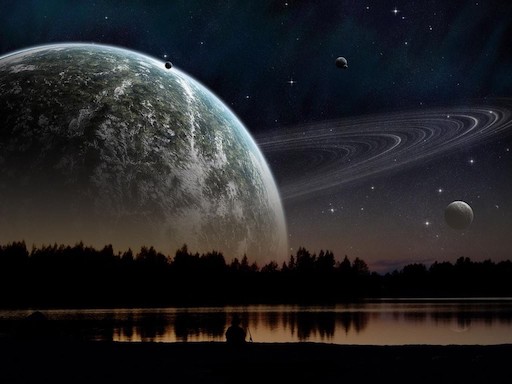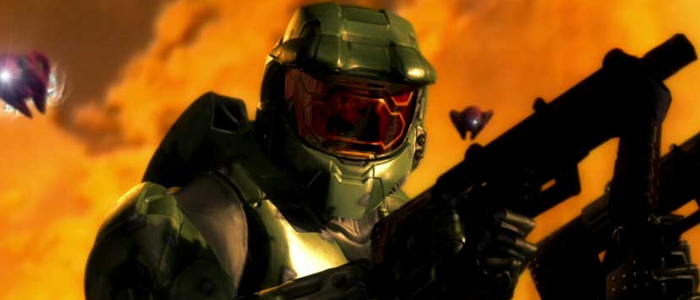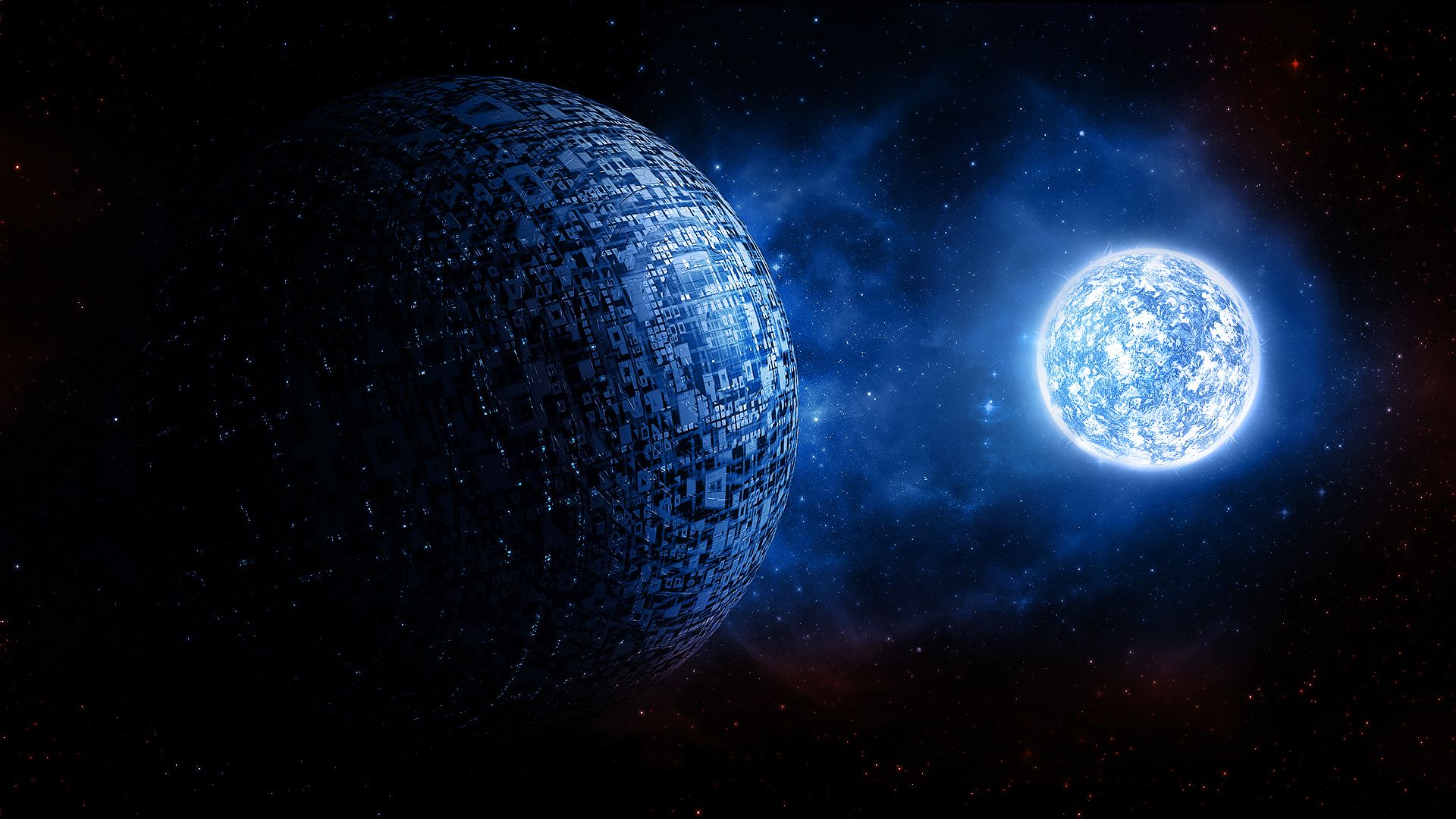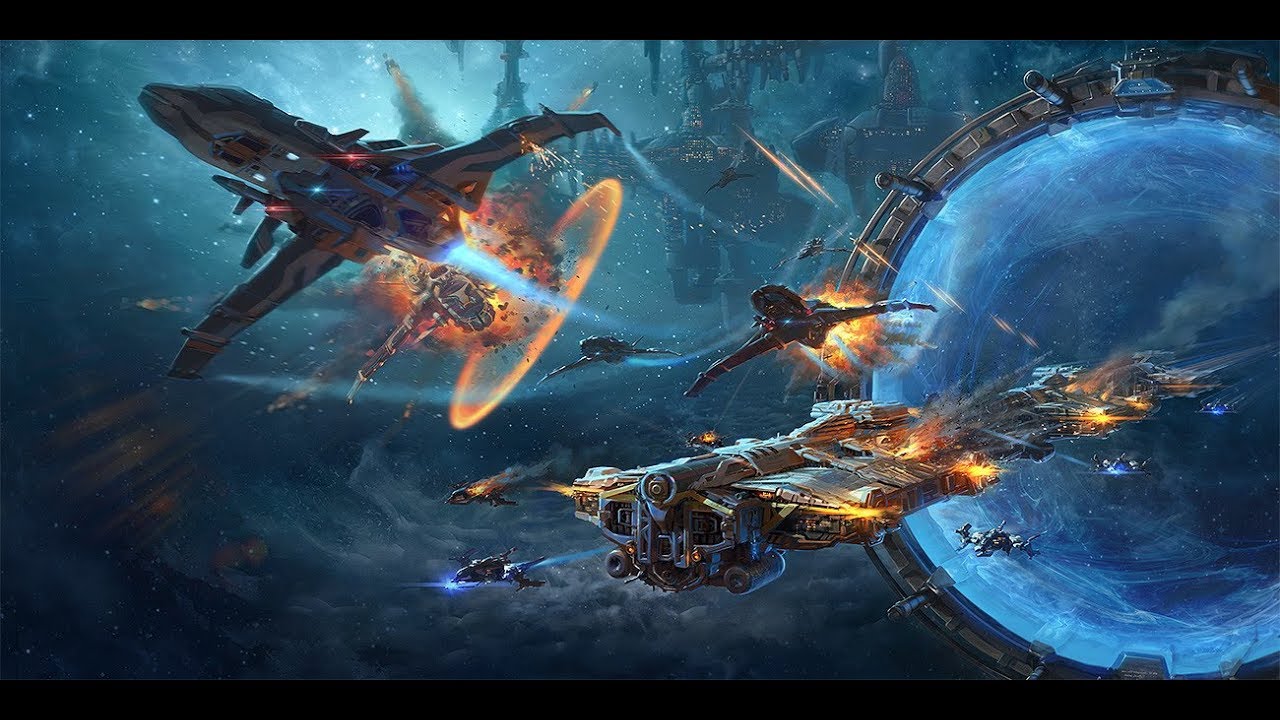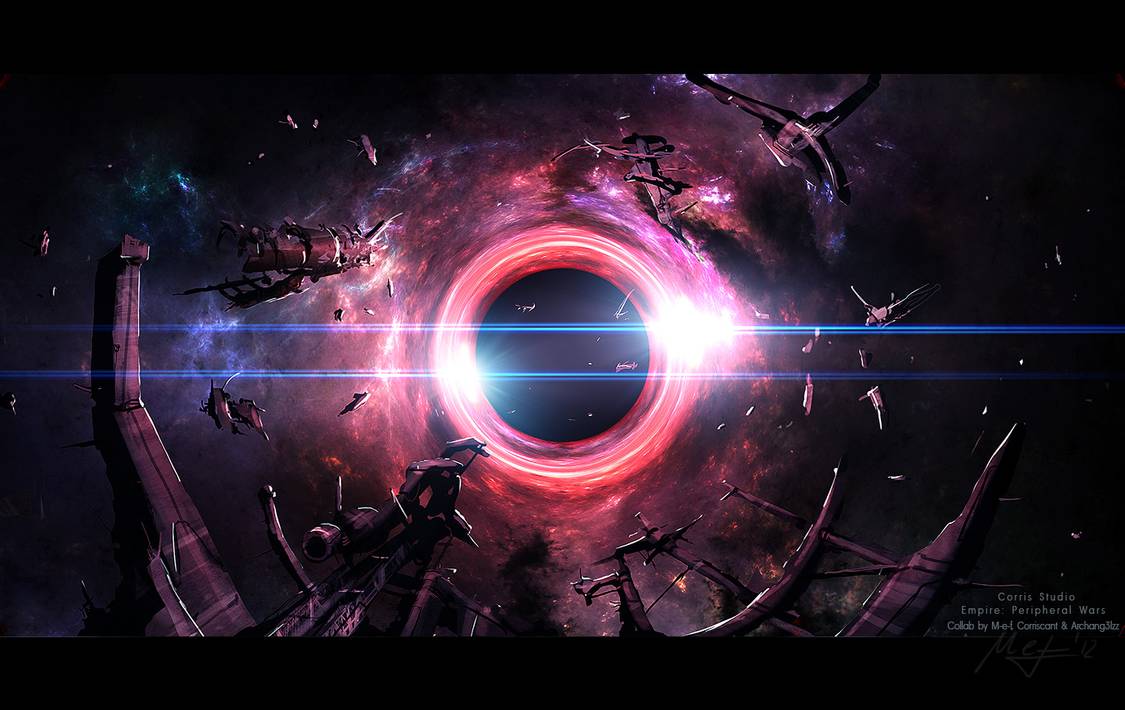So, you wanna build your own world, eh? Great, what key elements do you want to see when you view it from space? Barren desert except for a single thriving oasis? I don’t think you understand how worlds work.
Hey there, Randal here. I got caught up in our three day weekend, and completely forgot to plan out today’s post. As I was searching around for ideas, a number of things started dawning on me. Most of them revolve around the realism of creating a new planet or moon in a Sci-Fi setting, and how you should know your (and your group’s) line between realistic and close enough. Let’s get to it.
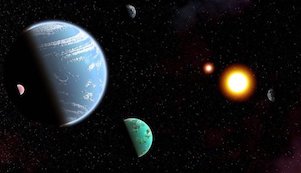 Terraforming primary concerns itself with the goings on of the corporation known as World Builders Intergalactic (WBI), primarily what it is doing with the moons of the gas giant Trellidon that it has control over. At face value, a single gas giant with 50+ moons in the configuration I outlined *is* valid, as I took the idea from an allegedly valid system. The basic premise of a single gas giant in a tri-star system was something I wanted to work with because I didn’t have to worry about any other features of a solar system, known or unknown. I am already trying to do a lot with the “dozens of moons” that I placed around this single gas giant. I am abandoning the need to worry about multiple planetary orbits, asteroid belts, solid vs. gas planets vs. dwarf planets.
Terraforming primary concerns itself with the goings on of the corporation known as World Builders Intergalactic (WBI), primarily what it is doing with the moons of the gas giant Trellidon that it has control over. At face value, a single gas giant with 50+ moons in the configuration I outlined *is* valid, as I took the idea from an allegedly valid system. The basic premise of a single gas giant in a tri-star system was something I wanted to work with because I didn’t have to worry about any other features of a solar system, known or unknown. I am already trying to do a lot with the “dozens of moons” that I placed around this single gas giant. I am abandoning the need to worry about multiple planetary orbits, asteroid belts, solid vs. gas planets vs. dwarf planets.
Admittedly, I claimed that the gas giant was large enough that it might have been a failed star, with moons almost as big as dwarf planets. Immediately you have to check how much suspension of disbelief you want in favor of telling the story you want. While this is a key factor of any roleplaying game, we are talking about a star based game with technology beyond ours. While Starfinder is written as Science-Fantasy, many players and GMs are still going to want to see more science and “realism” in their game than they would in a Pathfinder game. The “realism” of a gas giant the size of the sun with dwarf planets as moons implies that these moons are going to have orbits on a scale of our inner solar system, otherwise they would have been captured by the gas giant and likely used to ignite as a fourth star. I have tried my best to avoid any hard values on orbital distances specifically to ignore this train of thought, letting readers come to their own decisions should they even consider this. Being vague about numbers can be very helpful when building your own systems.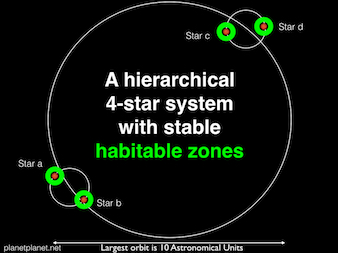
Another key element to multiple of my entries thus far has been the lack of acknowledgement of how water behaves on a moon. We know that Earth’s moon is direct consequences on our tides, but what about water on a moon around a much larger planet? So far, I have cheated my way out of this answer by declaring that much of the moons are manufactured or converted and have hollow cores that contain gravity devices to ensure that the surface has gravity sufficient to be comfortable to humanoids. I have let it drop at that, because that is just enough of a science-fantasy answer that most readers are going to either not notice or just accept it and move on. This can be something you might want to consider as where you decide to draw the line can lead to some interesting story elements as tidally locked moons and moons that rotate are going to have different behavior from their large bodies of water. This could easily lead to an adventure where settlers are in danger because everything they know about oceans puts them in danger as their settlements are devastated by tides after they move from a locked moon to a rotating one.
Similarly, the spin of the planet and the ocean currents affect the weather. Two identical planets (or moons) that differ only in their spin (or lack there of) are going to have radically different surface conditions. If we take a guess at an Earth analog that doesn’t spin we are likely to see half the planet scorched and the other half frozen with a thin belt that might have enough mild conditions and liquid water to support life. If we put those two Earth-like moons around a gas giant instead of a star, we get a completely different story as the gas giant is likely going to block them from the sun at some point during their orbits. How long they block the sun and what effect that has is entirely different meaning based on the giant’s orbit. If that orbit is close, they will alternate between scorching and freezing while a larger orbit will alternate between mild heat and freezing darkness. Their orbits will also play a role as the further they stray from their parent the more exposure to the sun they have.
 When it comes to the actual terrain of the planets or moons, you should make a choice to consider or ignore factors such as density and gravity strength, liquid core and magnetosphere, volcanism and plate tectonics, oceans and mountains, atmosphere composition and life forms. It is fine to tell your players that their quest leads them to the frozen wastes on the pole of a planet or they are asked to help creatures at the bottom of the vast oceans of a moon, but remember when describing the planet upon approach that there are likely going to be many other types of terrain. You can make up the terrain you want and handwave any minor issues or inconsistencies, but you should try to not fall into the trap of making each planet simply Tatooine or Hoth.
When it comes to the actual terrain of the planets or moons, you should make a choice to consider or ignore factors such as density and gravity strength, liquid core and magnetosphere, volcanism and plate tectonics, oceans and mountains, atmosphere composition and life forms. It is fine to tell your players that their quest leads them to the frozen wastes on the pole of a planet or they are asked to help creatures at the bottom of the vast oceans of a moon, but remember when describing the planet upon approach that there are likely going to be many other types of terrain. You can make up the terrain you want and handwave any minor issues or inconsistencies, but you should try to not fall into the trap of making each planet simply Tatooine or Hoth.
Well, really didn’t get into gritty details like I had thought I would, but I think I covered a lot of ground. Hopefully this helps kick off some ideas for you or at least helps remind you to think twice about some of the simple aspects of building planets and moons in your games!

